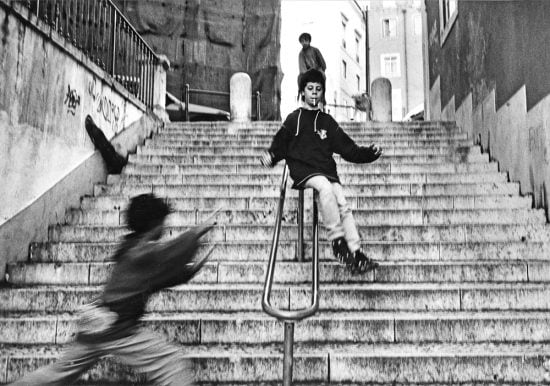A Biased View of Street Photographers
Table of ContentsHow Street Photographers can Save You Time, Stress, and Money.Things about Street PhotographersSome Ideas on Street Photographers You Need To KnowMore About Street PhotographersSome Ideas on Street Photographers You Should Know
, a style of digital photography that documents day-to-day life in a public location. The actual publicness of the setting allows the professional photographer to take candid photos of complete strangers, frequently without their knowledge. Road professional photographers do not necessarily have a social objective in mind, however they prefer to separate and capture minutes which might or else go unnoticed.He was influenced by several of those who influenced the road photographers of the 1950s and '60s, he was not chiefly interested in recording the spirit of the street., who functioned side by side with digital photographers trying to catch the essence of city life.

Offered the great top quality of his pictures and the breadth of product, engineers and musicians often bought Atget's prints to use as reference for their own work, though business passions were barely his primary motivation. Instead, he was driven to photograph every last remnant of the Paris he loved.
Street Photographers Fundamentals Explained
They expose the city via his eyes. His work and fundamental understanding of digital photography as an art type functioned as motivation to generations of professional photographers that followed. The following generation of road professional photographers, though they likely did not refer to themselves therefore, was ushered in by the photojournalism of Hungarian-born digital photographer Andr Kertsz.
Unlike his peers, Brassa made use of a larger-format Voigtlnder video camera with a much longer exposure time, requiring him to be more computed and thoughtful in his practice than he may have been if making use of a Leica. (It is thought that he might not have been able to manage a Leica at that time, yet he did, nevertheless, make use of one in the late 1950s to take colour photographs.) Brassa's pictures of the Paris underworld lit up by fabricated light were a revelation, and the collection of the collection that he published, (1933 ), was a major success.
Cartier-Bresson was a champ of the Leica camera and one of the very first digital photographers to maximize its abilities. The Leica permitted the photographer to engage with the surroundings and to capture moments as they took place - Street Photographers. Its fairly small size likewise assisted the digital photographer link discolor into the background, which was Cartier-Bresson's preferred method
Getting The Street Photographers To Work
It is because of this fundamental understanding of the art of image taking that he is usually attributed with rediscovering the medium all over again about a century given that its development. He took photos for more than a half century and affected generations of photographers to trust their eye advice and instinct in the minute.
These are the questions I will try to respond to: And after that I'll leave you with my very own definition of street digital photography. Yes, we do. Let's begin with defining what a meaning is: According to it is: "The act of defining, or of making something guaranteed, distinctive, or clear".
No, most definitely not. The term is both restricting and misinforming. Seems like a street digital photography must be photos of a roads best?! And all street digital photographers, with the exception of a handful of absolute visit beginners, will completely appreciate that a road is not the essential part to street digital photography, and in fact if it's a photo of a road with perhaps a few monotonous people doing absolutely nothing of rate of interest, that's not street photography that's a photo of a street.
He makes a legitimate point don't you assume? However, while I agree with him I'm unsure "honest public photography" will certainly capture on (although I do kind of like the term "honest digital photography") since "road photography" has been around for a long period of time, with numerous masters' names affixed to it, so I think the term is here to remain.
Fascination About Street Photographers
You can fire at the beach, at an event, in an alley, in a park, in a piazza, in a coffee shop, at a museum or art gallery, in a city station, at an occasion, on a bridge, under a bridge ...
Yes, I'm afraid we have no choice! Without policies we can not have a definition, and without an interpretation we don't have a category, and without a genre we don't have anything to specify what we do, and so we are stuck in a "guidelines interpretation genre" loophole! - Street Photographers
The Buzz on Street Photographers
